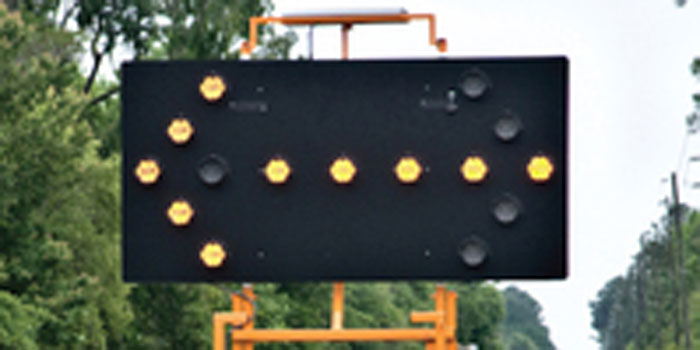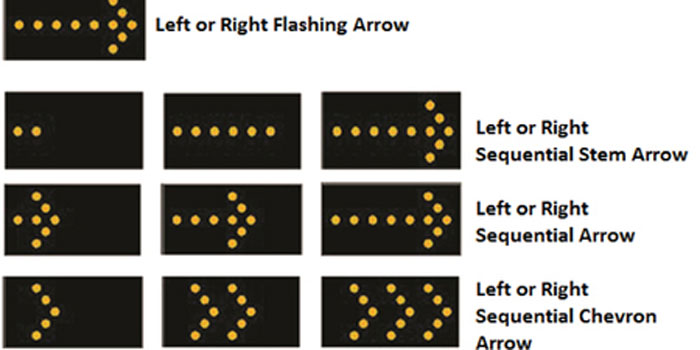INDOT Explains Flashing Arrow Signs

Motorists may understand a flashing arrow, however INDOT also uses other signals for construction-zone safety. (Photos provided)
INDIANA — With a busy season of state road projects underway, traffic information boards are being placed at construction work zones to ensure your safety when driving this summer. Many projects require lane closures or restrictions. To guide traffic, INDOT uses orange barrels, cones, barricades and arrow boards.
Everyone has come across an arrow board on the highway, in a work zone or at a major event; but have you ever come across an arrow board that displayed a pattern or mode that you had no idea what it meant? For the most part, arrow boards display arrow patterns as follows:

Drivers know what these mean: go left or go right, merge left or merge right. INDOT uses these arrow boards mainly to inform drivers that a lane is closed and they need to merge in the direction the arrow is guiding them. Of course, not all arrow boards perform all of these modes. INDOT utilizes the arrow boards to keep motorists informed and protected when driving through a construction work zone.
There are settings on the arrow boards that are not as obvious as arrows. Have you ever encountered patterns that made you go, “huh?” Maybe it appeared the arrow board was not working properly. Here are some modes INDOT may utilize an arrow board to perform:

These patterns are for cautionary warnings. The first two, flashing caution with four dots, are the most popular and the only caution pattern required by OSHA. INDOT uses these when crews are working on the shoulder of the road or for roadside work near the shoulder. The other two, alternating diamonds, are additional caution modes offered by some manufacturers. Cautionary modes can be used to indicate a work zone, dangerous section or an accident ahead. INDOT does not currently use the alternating diamonds, however they are used in other states.
Arrow boards are temporary traffic control devices used to control traffic, give advanced warning of lane closures and/or guide traffic through work zones or a traffic congested area. Although they are used more for directional warning or guidance, they can be used for their caution display modes.
